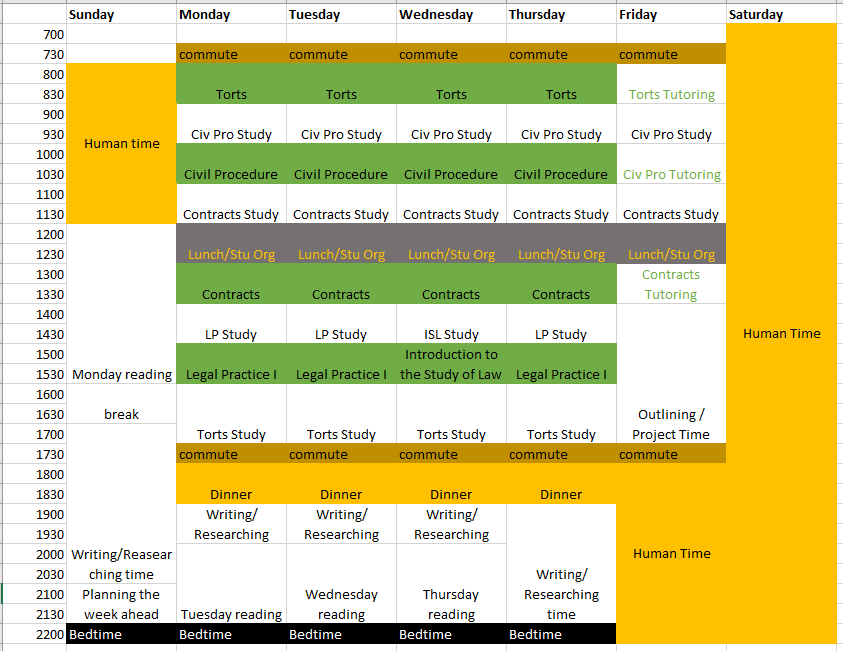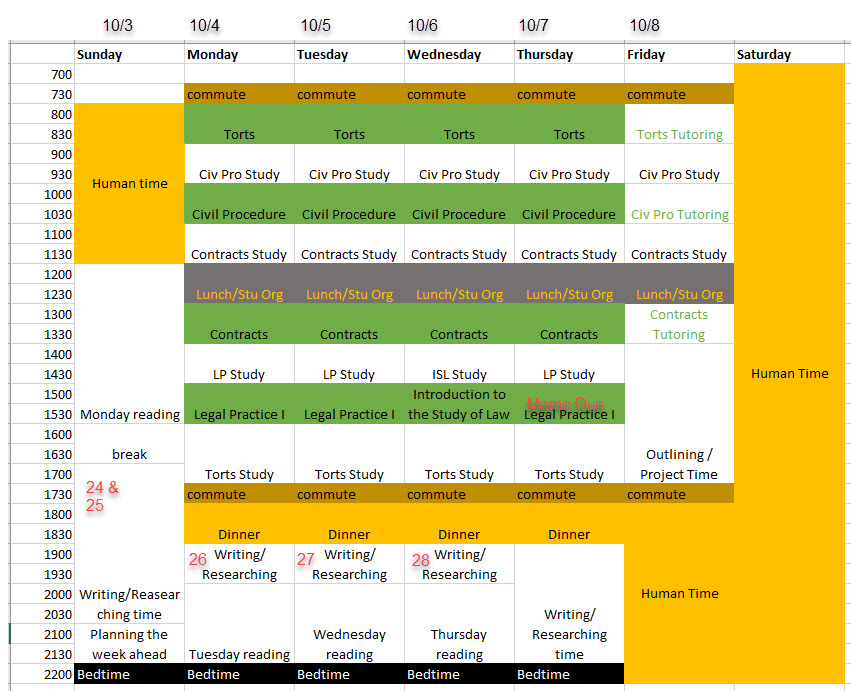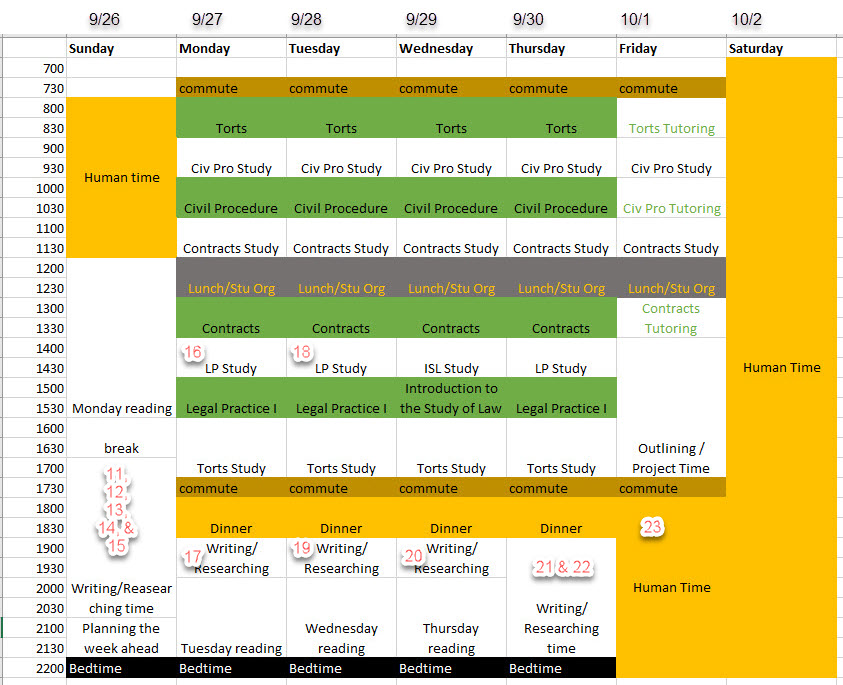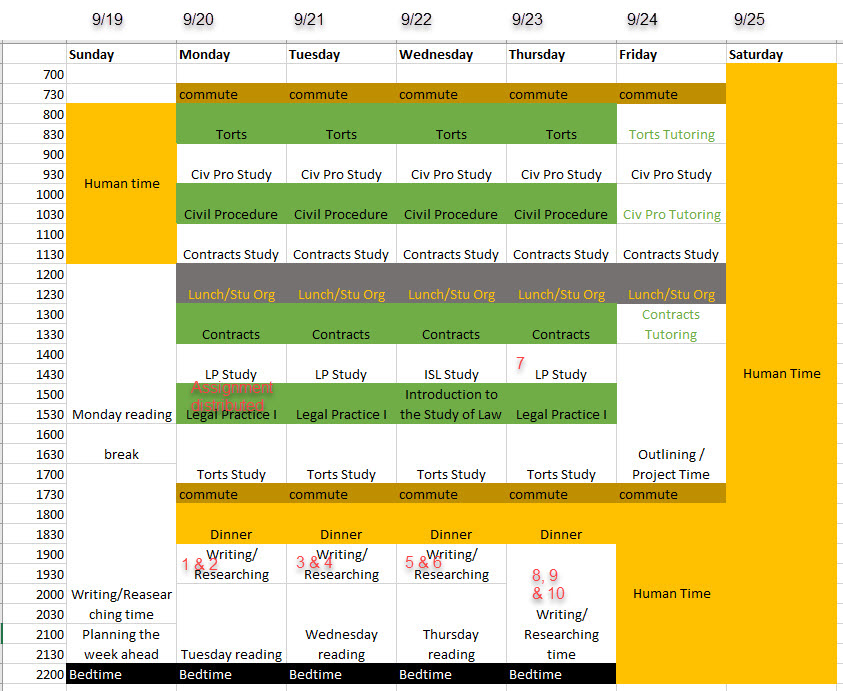About this point in the semester, 1Ls start finding their rhythm with respect to preparing for their doctrinal classes and keeping on top of class readings. This is also the time of the semester when students are starting to receive larger assignments as part of their legal writing classes. Figuring out how to fit these assignments into the day-to-day can be difficult, especially for people who may not have much writing experience prior to law school. It is pretty typical for students to underestimate the amount of time and the pacing that will lead to quality results in their writing classes.
By this point, hopefully, students have mapped out their time and are intentionally setting recurring appointments with themselves for various study activities. Generally speaking, there should be at least a ratio of 2 hours of personal study time for every hour of class time. However since so much of this stuff is new, in the first semester or even the first year, it’s more likely to be 3-4 hours personal study time for every hour of class time.

Projects requiring more than one work session
A lot of law school is composed of tasks that can be “done” in a single work session. Although, if you’ve read and implemented the suggestions from my post “How do I get it all done” you’ll note that isn’t really true because you’re practicing recall for a few minutes every time you sit down to study. But, it is true you can usually knock out a reading assignment in a single-sitting.
The writing assignments you are being given in your legal writing class SHOULD NOT be attempted in a single work session. But, that leads to issues of how does one sub-divide the work to make progress without losing one’s place.
As a starting point in figuring out how you’re going to manage a project that extends over multiple work sessions, I’d recommend taking a few minutes to brainstorm all the necessary tasks that when completed, will lead to a complete document or project.
In many law schools, students’ first assignment is a “closed” memo. That simply means, the professor has conducted the research and is providing the sources the student is expected to use as part of the assignment. So the brain storm list might look something like this:
- Read case x
- Brief case x
- Read case y
- Brief case y
- Read case z
- Brief case z
- Read case file
- Outline rules
- Annotate outline
- Draft rule explanation
- Draft case x synopsis for use in I.A rule application
- Outline comparison and contrast of case x facts with problem facts
- Draft case y synopsis for use in I.B rule application
- Outline comparison and contrast of case y facts with problem facts
- Draft case z synopsis for use in I.C rule application
- Outline comparison and contrast of case z facts with problem facts
- Draft I.A rule application and apply to case facts
- Draft I.B rule application and apply to case facts
- Draft I.C rule application and apply to case facts
- Draft fact section
- Assemble document
- Introduce transitions to make the different pieces flow
- Let rest at least 24 hours
- Edit for rule accuracy
- Edit for comprehensive analysis
- Edit for grammar & style
- Check citations
- Submit for review during rough draft conference
Once a list is generated, if needed, impose a logical sequence upon the list. Then, work backwards from the submission date and place the tasks from the end of the list into the blocks on your time map that were set aside for Legal Practice and spread them out for consistent pacing to the week you are working in.
So, using the example time map above, and assuming that the assignment is distributed on 9/20 with a submission date of 10/7:



Your mileage may vary
The scenario above is just a for example. You may only have 2 weeks between distribution and submission. Or maybe that level of dissection gives you a panic attack. There are dozens upon dozens of ways to segment and push work forward. Here is just one example that may be useful as you are figuring out how to law school and what your strengths and weaknesses as an autonomous human are.

